Fashion photography is a world of fantasy. Fashion images are seldom, if ever, “realistic.” That doesn’t mean the scenes may not be real, but “real” women are not always beautiful or clothed in expensive clothing. More often than not, fashion photography is an expression of the photographer’s fantasy (or a combination of the fantasies of the creative team).
For more than a decade, Photoshop has played an important part in fashion photography. It’s essential for retouching and creative effects… and has also become an invaluable tool to help many photographers present fantasy. In fact, creating the impossible has become a signature style for many photographers, and the use of CGI (computer generated imagery) is becoming more common.
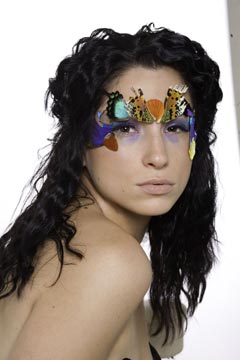
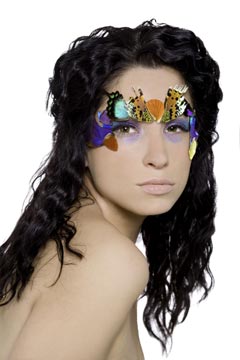
Copyright © Lindsay Adler
In this beauty shot, I used common beauty retouching techniques to make the fantasy of the “perfect” woman. I smoothed her skin (using clone and patch tools), slightly reshaped her face (using liquefy), got rid of a piece of chair apparent in the background (clone tool), and lengthened her neck and hair. While I didn’t insert anything fake into the image, I was able to achieve a surreal perfection that could not have existed otherwise.
Personally, I’ve utilized Photoshop to achieve my creative vision and effects that I simply wouldn’t have the resources to create otherwise. With Photoshop, I can reshape a body, change the color of a dress, put a model in a different location, retouch blemishes, add makeup, add props, and do a million other things that help make the images I see in my head become “real” on paper.
Photoshop was particularly important to me when I was just starting out in fashion photography. In the beginning, I didn’t have access to perfect models, interesting clothing, or makeup artists. Because I didn’t have a creative team, I relied on Photoshop to help me achieve many of my artistic goals. Once I became more established, I began to transition, using Photoshop to achieve “wackier” techniques and effects. As in other genres of photography, it is always most desirable to achieve a look or effect “in camera” instead of with Photoshop. This, however, often requires considerable money or access to locations or clothes that aren’t readily available.
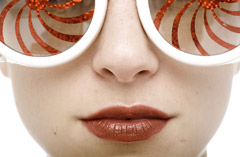
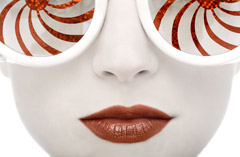
Copyright © Lindsay Adler
This close-up of the model above with “cyber goggles” was part of the futuristic red series. I wanted the model’s skin to be flawless and white to present her as surreal and perfect. Her skin needed to appear almost porcelain in tone and texture, so that it was cold and robotic. I also wanted the reds to play predominately in the image, with her lips matching perfectly. As before, with this shoot I didn’t have a great stylist or makeup artist. I purchased the glasses on eBay and retouched their imperfections in Photoshop. The next step I took was to smooth out her skin with the patch and clone tools until it was completely flawless. When I examined the model’s face, I noticed that it was asymmetrical. I had to use liquefy (a Photoshop tool for moving, distorting and manipulating pixels) on her nostrils and lips to make her perfectly symmetrical. Once her skin and shape were perfected, I moved on to the color of her skin and used the hue/saturation Photoshop tool to change its color. I had to lighten her skin (to achieve that porcelain look), and in the end, I had achieved an effect in Photoshop that I could not have achieved otherwise with the resources available to me at that time.
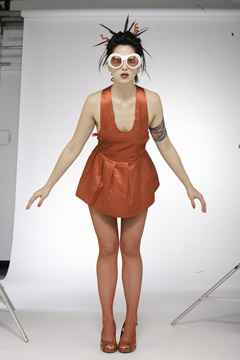
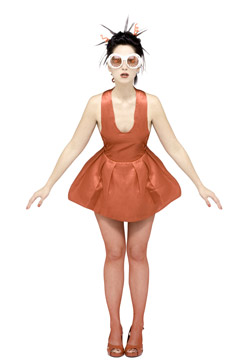
Copyright © Lindsay Adler
In the before/after photos above, I achieved several effects that would have been impossible otherwise. I envisioned a shoot that was very futuristic, and while it would be colorful, it would also feel almost sterile and surreal. First, I didn’t have access to clothing that was geometric or graphic enough to create my futuristic effect. Instead, I bought a dress (for $30 from Target) and Photo-shopped the stronger shapes into the image. Also, I was working in a very small studio with limited space. I wanted to place fill-cards on either side of the model to create a light box around her. I was able to Photoshop out the edges of the background and lighting stands, putting the model in a far more sterile environment. Finally, the model was extremely uneven. To achieve the look I wanted, she needed to appear rigid and perfectly even (like a robot). I was able to manage this by mirroring her body. I simply perfected the left side of the body, duplicated it, and made it into a mirrored image of the right. This achieved my ultimate goal–perfect symmetry, rigidity, and a powerful graphic image.
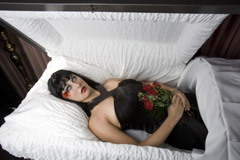
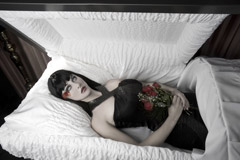
Copyright © Lindsay Adler
In this image, I did the best I could to achieve my effects before entering Photoshop. For this shot, I collaborated with a designer who had a collection inspired by “dead and mourning brides.” We called up a local funeral parlor that offered up their space and a casket for the day of the shoot. To make the model look dead, I purchased special contact lenses online for her to wear that would “white-out” her eyes. I then utilized Photoshop to perfect the scene. I cleaned it up by helping to shape the model’s body (giving her more shape and making her more slender) and fixing imperfections like the latch on the casket. Then I whitened her skin to make her deadly pale. While I did my best to achieve the fantasy outside of Photoshop, I was able to utilize Photoshop to perfect and enhance the image.
In conclusion, Photoshop enables me to create effects that would be virtually impossible without a computer. I have recently utilized Photoshop in several fashion editorials that have run in a variety of print and fashion magazines.
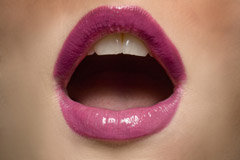
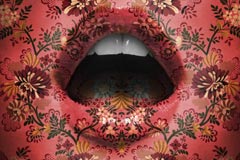
Copyright © Lindsay Adler
Above, I was able to photograph a model, and then use Photoshop to apply textures to her skin. The result is beautiful and surreal. I imagined this shoot after seeing the work of a Japanese artist who projected flowers onto her subjects. Her work inspired me to actually “map” the textures onto the skin of the models. I used the “displace” tool to wrap textures around the skin.
by Lindsay Adler

Leave a Reply